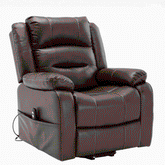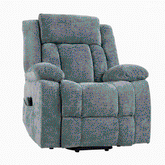Transform Your Space: Innovative Home Solutions for the Modern South African Lifestyle
The Importance of Ergonomics in the Modern Work Environment
Understanding Ergonomics and its Impact on Productivity
Ergonomics is about creating a workspace that fits the worker. It aims to boost comfort and efficiency. In South African offices, good ergonomics can lead to higher productivity. When workers are comfortable, they can focus better on their tasks.

Software ergonomie, or software ergonomics, is also crucial. It focuses on making computer programs easy to use. User-friendly software can speed up work and reduce errors. This is especially important in today's digital workplaces.
Studies show that ergonomic workspaces can increase productivity by up to 25%. Workers make fewer errors and work faster when they're comfortable. They also take fewer breaks due to discomfort. This leads to higher output and better quality work.
Why Ergonomics is Non-Negotiable for South African Businesses
In South Africa's competitive business world, ergonomics is crucial. It's not just about comfort; it's about staying ahead. Companies that ignore ergonomics risk falling behind their rivals. They may face higher costs due to worker injuries and lost productivity.
South African law requires businesses to ensure worker safety. This includes providing ergonomic workspaces. Failing to do so can lead to legal issues and fines. It can also damage a company's reputation as an employer.
Ergonomics can help South African firms attract and keep top talent. Young professionals often look for companies that value worker well-being. By investing in ergonomics, businesses show they care about their staff. This can give them an edge in the job market.
Top Ergonomic Office Furniture Solutions for South African Companies
Selecting the Right Office Chair: A Buyer's Guide
A good office chair is key to workplace comfort. When choosing chairs for your South African office, look for adjustability. The best chairs let users change the height, armrests, and lumbar support. This ensures a good fit for different body types.

Consider the chair's material and breathability. South Africa's warm climate calls for chairs that keep workers cool. Mesh backs or breathable fabrics are good options. Look for chairs with sturdy bases and quality casters for easy movement.
Don't forget about style. Modern South African offices often prefer sleek, professional-looking chairs. However, comfort should always come first. Remember, a good chair is an investment in your team's health and productivity.
The Best Office Foot Rest Stools for Enhanced Comfort
Foot rest stools are often overlooked, but they're vital for ergonomics. They help maintain proper posture and reduce leg strain. This is especially important for shorter employees who may not be able to rest their feet flat on the floor.
When selecting foot rest stools, look for adjustable height options. This allows users to find their perfect position. Some models offer rocking or tilting features. These can promote subtle movement, improving circulation throughout the day.
Consider foot rest stools with massage surfaces. These can provide extra comfort and help reduce fatigue. Look for durable materials that can withstand daily use. Non-slip surfaces are also important to keep the stool in place under desks.
Innovative Desks and Workspace Design for Efficiency
Modern office design in South Africa is moving towards flexible workspaces. Standing desks are gaining popularity. They allow employees to alternate between sitting and standing throughout the day. This can reduce the health risks associated with prolonged sitting.
Consider desks with built-in cable management systems. These keep workspaces tidy and reduce tripping hazards. Some desks offer modular designs. These allow for easy reconfiguration as office needs change.
Lighting is also crucial in workspace design. Natural light is best, but where it's not possible, use adjustable task lighting. This reduces eye strain and headaches. Also, consider acoustic solutions to manage noise levels in open-plan offices.
Implementing Ergonomics: Best Practices and Strategies
Strategies to Educate Employees on Ergonomics
Education is key to successful ergonomics implementation. Start with basic training sessions for all employees. Cover topics like proper posture, desk setup, and the importance of regular breaks. Use visual aids and hands-on demonstrations to make the information stick.

Create easy-to-follow guides for workstation setup. Place these at each desk or in common areas. Consider appointing ergonomics champions within teams. These individuals can help their colleagues and spot potential issues.
Use regular reminders to keep ergonomics top of mind. This could be through email tips, posters, or brief team meetings. Encourage employees to speak up if they're experiencing discomfort. Create a culture where asking for ergonomic adjustments is normal and welcomed.
Measuring the Success of Your Ergonomic Program
To gauge the impact of your ergonomics efforts, track key metrics. Monitor absenteeism rates related to musculoskeletal issues. Compare these before and after implementing ergonomic solutions. Survey employees about their comfort levels and job satisfaction.
Look at productivity indicators. See if there's an increase in output or quality of work. Track the number of ergonomic-related complaints or requests for equipment adjustments. A decrease over time can indicate success.
Consider conducting regular ergonomic assessments of your workspace. This can help identify areas for improvement. Use this data to refine your ergonomics strategy over time. Remember, ergonomics is an ongoing process, not a one-time fix.
Ergonomics and Workplace Wellness: Creating a Win-Win Scenario
Ergonomics should be part of a broader workplace wellness strategy. Combine ergonomic initiatives with other health programs. This could include fitness challenges, stress management workshops, or healthy eating initiatives.
Encourage regular movement throughout the workday. Set up walking meetings or stretch break reminders. Consider creating a relaxation area where employees can take short breaks. This can help reduce stress and improve overall well-being.
Involve employees in the ergonomics process. Ask for their input on furniture choices or office layout. This creates a sense of ownership and increases buy-in. When employees feel their needs are heard, they're more likely to engage with ergonomic practices.
Home solutions are becoming increasingly important as more South Africans work remotely. Consider ergonomic sofas and chairs for home offices. These can provide comfort and support during long work hours. Proper lighting and desk setups are also crucial for home workspaces.
By focusing on ergonomics and innovative home solutions, South African businesses can create better work environments. They can boost productivity and employee satisfaction. It's an investment that pays off in many ways. Remember, when it comes to office design, working smarter truly does lead to working better.




